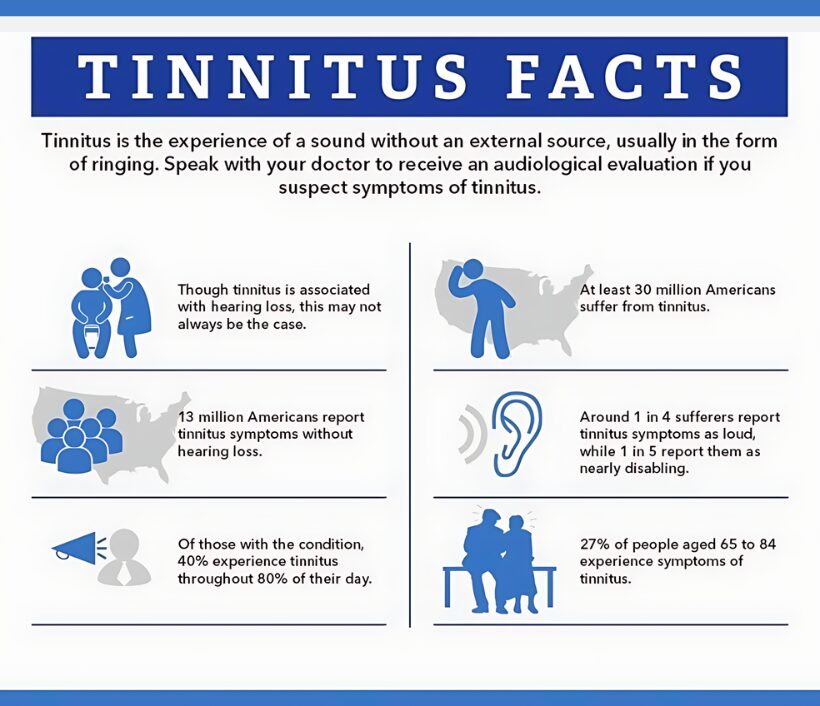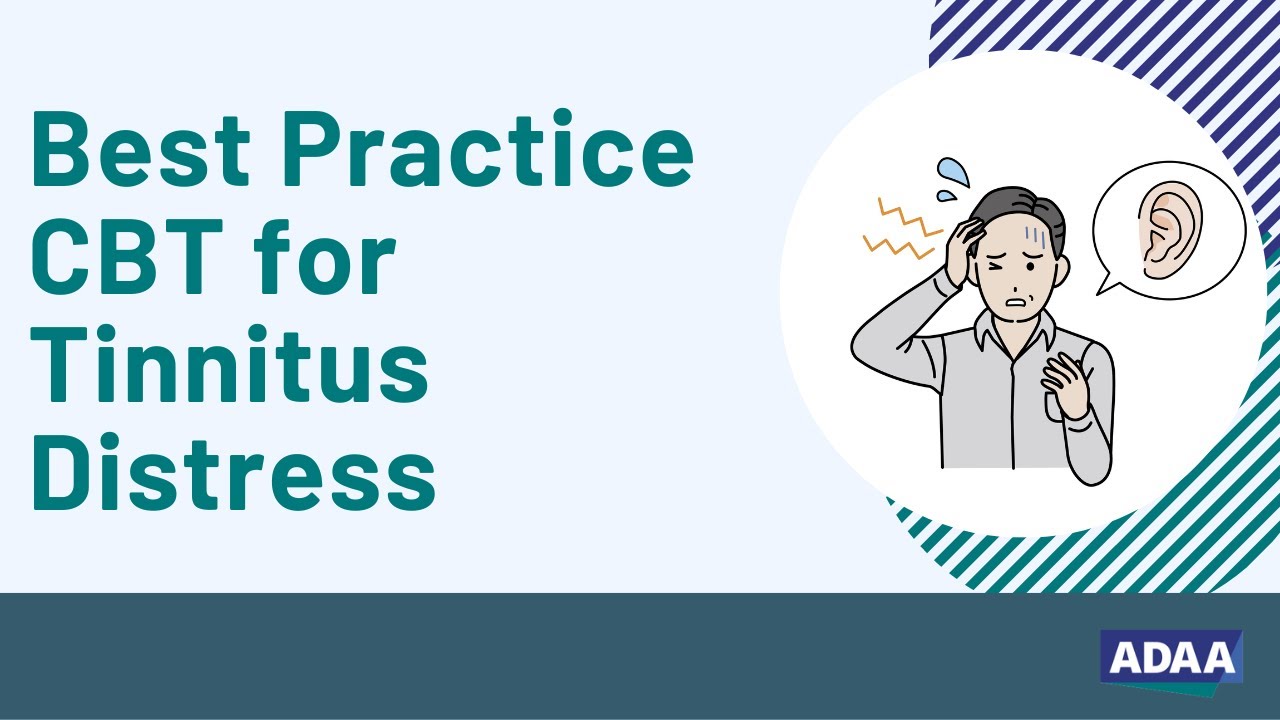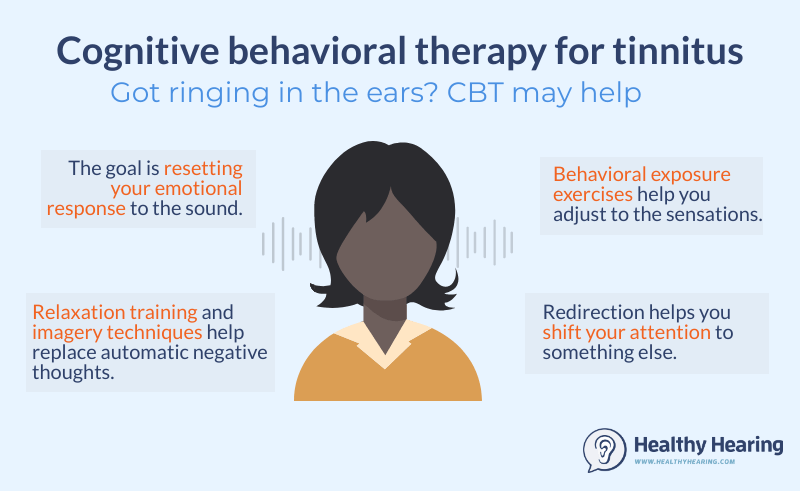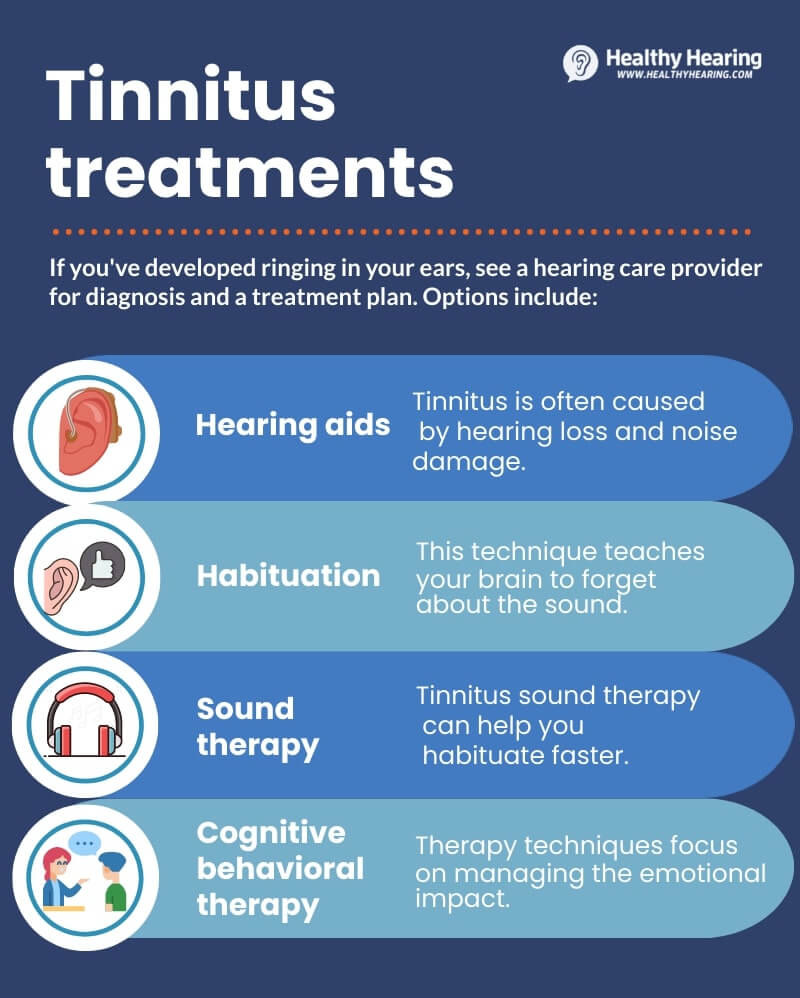Key Takeaways
- Cognitive Behavioral Therapy (CBT) effectively reduces distress related to tinnitus in PTSD patients without necessarily changing the actual sound perception
- PTSD amplifies tinnitus symptoms through heightened stress responses and negative thought patterns that CBT directly addresses
- Research shows CBT significantly improves quality of life for tinnitus sufferers, with benefits lasting long after treatment ends
- CBT techniques like cognitive restructuring and mindfulness provide practical tools to break the cycle between anxiety and tinnitus distress
- The most effective treatment approaches combine CBT with sound therapy or other modalities for comprehensive tinnitus management
For those struggling with the persistent ringing, buzzing, or humming of tinnitus alongside PTSD symptoms, relief might seem impossible. The constant sound becomes more than just annoying—it transforms into a trigger that intensifies anxiety, deepens depression, and deteriorates quality of life. Cognitive Behavioral Therapy (CBT) has emerged as a powerful intervention that addresses not the sound itself, but your relationship with it. TrebleHealth’s specialized therapeutic approaches have shown that changing how you respond to tinnitus can dramatically reduce its impact on daily functioning, especially when symptoms are compounded by trauma.
How CBT Changes the Brain’s Response to Tinnitus in PTSD Patients
“How PTSD and Tinnitus Are Linked” from treblehealth.com and used with no modifications.
CBT works on a neurological level by rewiring how your brain processes and responds to tinnitus. When you experience both PTSD and tinnitus, your nervous system essentially becomes hypervigilant to both external and internal triggers. This heightened state creates a perfect storm where tinnitus sounds become magnified and more distressing than they might be otherwise.
The neurophysiological model of tinnitus explains that emotional factors significantly impact how distressing you perceive the sound to be. CBT directly targets these emotional responses by changing unhealthy thought patterns about tinnitus. Rather than attempting to eliminate the sound—which is rarely possible—CBT helps you develop a healthier relationship with it through cognitive restructuring.
Through consistent practice of CBT techniques, your brain can develop new neural pathways that respond differently to the presence of tinnitus. This process, often called neuroplasticity, allows you to function well despite the continued presence of the sound. Many patients report that after CBT, the tinnitus remains but no longer dominates their attention or triggers emotional distress.
The Link Between PTSD and Persistent Tinnitus Symptoms
“Tinnitus : Causes, Symptoms, and …” from www.anandhospital.com and used with no modifications.
The connection between PTSD and tinnitus runs deeper than coincidence. Trauma can directly cause tinnitus through physical injury, but more commonly, it creates conditions that amplify existing tinnitus or lower your threshold for noticing it. The constant state of hyperarousal characteristic of PTSD keeps your auditory processing system on high alert, making you more sensitive to internal sounds that others might easily ignore. To understand more about managing tinnitus symptoms, explore progressive tinnitus management techniques.
Why Trauma Amplifies Tinnitus Perception
Trauma fundamentally changes how your brain filters sensory information. After experiencing trauma, your amygdala—the brain’s alarm system—becomes hypersensitive, constantly scanning for potential threats. This heightened vigilance includes increased attention to auditory stimuli, making tinnitus sounds seem louder and more intrusive than they objectively are.
The stress response triggered by PTSD also increases muscle tension, particularly in the neck and jaw areas, which can worsen tinnitus symptoms. Additionally, trauma often disrupts sleep patterns, and sleep deprivation is a known amplifier of tinnitus perception. This creates a vicious cycle where PTSD symptoms worsen tinnitus, and increased tinnitus exacerbates PTSD symptoms.
Research has shown that individuals with PTSD are significantly more likely to experience severe, life-disrupting tinnitus compared to the general population. The combination of these conditions creates a unique treatment challenge that standard approaches to either condition alone may not adequately address.
Common Triggers That Worsen Symptoms
Understanding what amplifies your tinnitus symptoms is crucial for effective management. For those with PTSD-related tinnitus, specific triggers often intensify both conditions simultaneously. Environmental stressors like loud noises can trigger both PTSD responses and increased tinnitus awareness, creating overwhelming sensory experiences. To learn more about effective management strategies, explore progressive tinnitus management.
Sleep disturbances create another significant trigger point. The quiet of night often makes tinnitus more noticeable, while PTSD frequently causes nightmares or hypervigilance that prevent restful sleep. This sleep disruption then increases stress hormones, making both conditions worse the following day.
Social isolation, often a response to both conditions, creates additional problems. Many individuals withdraw from activities to avoid PTSD triggers or environments where tinnitus might be more noticeable, but this isolation typically intensifies psychological distress and tinnitus perception.
The Cycle of Anxiety and Tinnitus Distress
The relationship between anxiety and tinnitus creates a self-perpetuating cycle that’s particularly challenging for PTSD patients. When you notice tinnitus sounds, anxiety naturally increases—your brain perceives the sound as potentially threatening, especially if you’ve experienced trauma. This anxiety then triggers your sympathetic nervous system, increasing stress hormones that actually make tinnitus more noticeable and distressing.
This cycle becomes deeply ingrained through negative reinforcement. Each time you experience increased tinnitus and respond with anxiety, the association between the sound and distress strengthens. For PTSD sufferers, this cycle can become intertwined with trauma responses, where tinnitus becomes a conditioned reminder of traumatic experiences or a signal that danger is present.
Breaking this cycle requires addressing both the cognitive (thought) and behavioral (action) components—precisely what CBT is designed to do. By challenging catastrophic interpretations of tinnitus and replacing avoidance behaviors with adaptive coping strategies, CBT directly interrupts this cycle at multiple points.
CBT Techniques That Specifically Target Tinnitus Distress
“Best Practice CBT for Tinnitus Distress …” from www.youtube.com and used with no modifications.
CBT provides a structured approach to managing tinnitus distress through specific, evidence-based techniques. Rather than promising to eliminate the sound, these strategies focus on changing your relationship with tinnitus and reducing its impact on your life. For PTSD patients, these techniques often address overlapping symptoms that exacerbate both conditions. Learn more about the role of cognitive behavioral therapy in providing relief for veterans.
1. Cognitive Restructuring for Negative Tinnitus Thoughts
At the core of CBT is cognitive restructuring—identifying, challenging, and reframing unhelpful thoughts about tinnitus. Many people with tinnitus develop catastrophic thinking patterns like “This noise will drive me crazy” or “I’ll never enjoy silence again.” These thoughts significantly increase distress and can trigger PTSD symptoms.
Through cognitive restructuring, you learn to recognize these automatic negative thoughts and evaluate their accuracy. A therapist will guide you to collect evidence that contradicts these thoughts and develop more balanced perspectives. For example, replacing “I can’t live with this noise” with “This sound is annoying, but I’ve managed difficult situations before and can develop strategies to cope with this too.” For more information on how cognitive behavioral therapy can help, read about tinnitus relief for veterans.
Research shows that this cognitive work directly reduces tinnitus-related distress even when the acoustic characteristics of the tinnitus remain unchanged. By changing how you think about tinnitus, you change your emotional response to it.
2. Mindfulness and Attention Shifting Exercises
Mindfulness techniques teach you to observe tinnitus without judgment or reaction—a powerful skill for reducing distress. Rather than fighting against the sound or becoming absorbed in negative thoughts about it, mindfulness encourages acceptance of the present moment experience without struggle. For those seeking additional support, cognitive behavioral therapy can also play a role in managing tinnitus symptoms effectively.
Attention shifting exercises complement mindfulness by helping you deliberately direct your focus away from tinnitus when it becomes overwhelming. This isn’t about ignoring or suppressing awareness of tinnitus, but rather developing control over where you place your attention. For PTSD patients who often experience attention fixation on threatening stimuli, this skill has benefits beyond tinnitus management.
A typical exercise might involve first acknowledging the tinnitus, then deliberately shifting attention to another sensory experience like the feeling of your feet on the ground or the sight of something in your environment. With practice, this ability to flexibly direct attention reduces the grip tinnitus has on your awareness. For more information on managing tinnitus, consider exploring progressive tinnitus management techniques.
3. Relaxation Training to Reduce Physical Tension
Physical tension—especially in the neck, jaw, and shoulders—often intensifies tinnitus perception. This tension is typically elevated in people with PTSD due to chronic hypervigilance. Relaxation training directly addresses this physical component of tinnitus distress, and its effectiveness can be enhanced by techniques such as Cognitive Behavioral Therapy.
Progressive muscle relaxation teaches you to systematically tense and release different muscle groups, becoming more aware of physical tension and how to release it. Deep breathing exercises activate the parasympathetic nervous system, counteracting the stress response that amplifies tinnitus awareness. Guided imagery provides mental distraction while promoting relaxation through visualization of peaceful scenes.
Regular practice of these techniques can lower your baseline stress level, reducing the intensity of both PTSD symptoms and tinnitus distress. Many patients report that consistent relaxation practice creates periods where they’re completely unaware of their tinnitus, even though the sound itself hasn’t changed.
4. Exposure Therapy for Sound Sensitivity
Many people with PTSD-related tinnitus develop hyperacusis (increased sensitivity to sound) and phonophobia (fear of certain sounds). These conditions lead to avoidance behaviors that actually reinforce anxiety and make tinnitus more intrusive. Exposure therapy addresses these issues through gradual, controlled exposure to challenging sound environments.
The process begins with creating a hierarchy of sound situations from least to most distressing. With guidance from your therapist, you’ll progressively expose yourself to these situations while using coping skills learned in therapy. This gradual approach prevents overwhelming anxiety while helping you build confidence in managing difficult sound environments.
For example, if crowded restaurants trigger both tinnitus awareness and PTSD symptoms, your therapist might help you start with brief exposures during quiet times, gradually working up to busier periods. This systematic desensitization reduces both the fear response and the tinnitus distress in these situations.
5. Sleep Hygiene Improvements for Nighttime Symptoms
Tinnitus often becomes most bothersome at night when environmental sounds no longer mask it and PTSD-related hypervigilance can make sleep elusive. CBT addresses this through structured sleep hygiene protocols that improve both sleep quality and tinnitus tolerance during quiet hours.
These protocols typically include establishing consistent sleep and wake times, creating a relaxing pre-sleep routine, optimizing your sleep environment, and limiting screen time before bed. For many PTSD patients, nighttime represents a period of increased vulnerability, making these strategies particularly valuable for overall symptom management. Additionally, exploring tinnitus relief for veterans can also play a crucial role in improving sleep quality and reducing nighttime distress.
Some therapists also recommend sound enrichment specifically for sleep—using white noise, nature sounds, or specialized tinnitus masking sounds that make tinnitus less noticeable without disrupting sleep. The goal is to reduce the contrast between tinnitus and background sound that often makes tinnitus more prominent at night.
What the Research Shows: Evidence for CBT’s Effectiveness
“Cognitive behavior therapy for tinnitus …” from www.healthyhearing.com and used with no modifications.
The scientific evidence supporting CBT for tinnitus is substantial and growing, particularly for those with comorbid conditions like PTSD. Multiple randomized controlled trials—the gold standard of clinical research—have demonstrated significant reductions in tinnitus-related distress following CBT interventions.
One meta-analysis examining 15 studies found that CBT consistently outperforms both no-treatment controls and other interventions in reducing tinnitus distress and improving quality of life. Importantly, these benefits appear to be maintained during long-term follow-up assessments, suggesting that the skills learned during CBT create lasting changes in how patients relate to their tinnitus.
Long-Term Benefits vs. Short-Term Relief
One of the most compelling aspects of CBT for tinnitus is its durability compared to other interventions. While some treatments provide temporary relief but require ongoing application, the benefits of CBT often persist long after the formal therapy has ended. Follow-up studies tracking patients for 12-18 months after treatment completion consistently show maintained improvements in tinnitus distress and quality of life.
This long-term effectiveness stems from CBT’s focus on teaching transferable skills rather than providing passive relief. Patients learn to identify and modify unhelpful thought patterns, implement stress management techniques, and change behaviors that perpetuate distress—skills they can continue applying independently after therapy concludes.
The contrast with purely medical approaches is striking. While medications might temporarily reduce anxiety or improve sleep, they rarely produce lasting changes in how patients experience tinnitus. CBT, by addressing the underlying psychological mechanisms maintaining distress, creates sustainable improvement that doesn’t depend on continued treatment.
Real Progress Markers: When CBT is Working
Successful CBT for tinnitus doesn’t necessarily mean the sound disappears. Instead, progress manifests in changing relationships with tinnitus and reduced impact on daily life. Recognizing these markers helps maintain motivation through the therapy process.
Reduction in Tinnitus-Related Distress Scores
Standardized questionnaires like the Tinnitus Handicap Inventory (THI) or Tinnitus Functional Index (TFI) provide objective measures of how much tinnitus interferes with your life. Decreasing scores on these measures represent meaningful improvement, even if the acoustic properties of your tinnitus remain unchanged. Many patients see their scores drop from the “severe” to “mild” range through CBT, reflecting significant quality of life improvements.
Beyond formal assessments, everyday indicators like spending less time thinking about tinnitus, reduced emotional reactions when noticing it, and decreased avoidance of activities signal that therapy is working. These changes often occur gradually, with patients first noticing brief periods where they weren’t aware of their tinnitus, eventually extending to longer intervals of reduced awareness.
For those with PTSD, progress may also include decreased startle responses to sounds, improved tolerance for noisy environments, and reduced association between tinnitus and traumatic memories. These improvements often parallel decreases in overall PTSD symptom severity.
Changes in Neural Activity Patterns
Emerging research using neuroimaging techniques shows that successful CBT for tinnitus correlates with measurable changes in brain activity. Before treatment, many tinnitus sufferers show hyperactivity in the auditory cortex and increased connectivity between auditory and emotional processing regions. Following effective CBT, these patterns normalize, with decreased activity in areas associated with emotional distress.
These neurological changes reflect the biological basis of psychological improvement. By repeatedly practicing new ways of responding to tinnitus, you’re literally rewiring neural circuits involved in tinnitus perception and emotional processing. This neuroplasticity explains how changes in thinking and behavior can produce lasting improvements in tinnitus distress.
Some clinics now use electroencephalogram (EEG) measurements to track these neural changes during treatment, providing objective evidence of improvement that complements subjective reports. These biomarkers may eventually help personalize treatment approaches and predict which patients will benefit most from specific CBT techniques.
Combining CBT With Other Treatments for Maximum Relief
“Tinnitus relief: Top treatments and …” from www.healthyhearing.com and used with no modifications.
While CBT alone provides significant benefits for tinnitus management, combining it with complementary approaches like our highly recommend natural supplement often produces the best results. Integrative treatment plans address multiple dimensions of tinnitus simultaneously, enhancing overall effectiveness.
Sound Therapy Integration
Sound therapy—using external sounds to reduce tinnitus perception—works well alongside CBT. While CBT addresses the psychological response to tinnitus, sound therapy targets the auditory aspects through masking, distraction, or habituation techniques. Together, they create a comprehensive approach that addresses both the sound itself and your reaction to it.
Common sound therapy options include white noise machines, specialized hearing aids with tinnitus masking features, and notched music therapy that targets the specific frequencies of your tinnitus. Your therapist can help integrate these acoustic tools with cognitive techniques, teaching you to use sound strategically while applying CBT skills to manage emotional responses.
For PTSD patients, carefully selected sound therapy can also help reduce hypervigilance and startle responses, creating a more relaxed auditory environment that supports overall recovery. This combination often produces faster improvement than either approach alone.
Medication Considerations
While no medication directly eliminates tinnitus, certain pharmaceuticals can help manage associated symptoms like anxiety, depression, or insomnia that often accompany tinnitus, especially in PTSD contexts. Antidepressants, particularly selective serotonin reuptake inhibitors (SSRIs), sometimes reduce tinnitus distress by addressing underlying mood disorders.
When considering medications, it’s important to work with healthcare providers who understand the relationship between tinnitus and PTSD. Some medications can potentially worsen tinnitus, so careful selection and monitoring are essential. Generally, medications work best as temporary supports while developing longer-term coping strategies through CBT.
The most effective approach often involves using medication to reduce initial distress enough to fully engage with CBT, then gradually reducing medication as psychological skills strengthen. This strategy capitalizes on the immediate relief medications can provide while building toward sustainable improvement through CBT.
Finding the Right CBT Therapist for PTSD-Related Tinnitus
“CBT For Tinnitus | CBT of Florida” from cbtcentralflorida.com and used with no modifications.
Finding a therapist with the right expertise significantly influences treatment outcomes. The intersection of tinnitus and PTSD requires specialized knowledge that not all mental health professionals possess. Taking time to find the right match can make the difference between modest improvement and transformative results.
Start by seeking therapists who explicitly mention experience with both tinnitus and trauma in their practice descriptions. While general CBT skills provide a foundation, specific training in these areas ensures your therapist understands the unique challenges you face. Many audiologists and otolaryngologists maintain referral networks of mental health professionals with appropriate specialization.
Essential Qualifications to Look For
Beyond basic credentials as a licensed mental health professional, look for specific training in CBT protocols for tinnitus and trauma. Certifications in trauma-focused CBT, experience working with veterans or trauma survivors with hearing issues, and familiarity with current tinnitus management research are valuable indicators of appropriate expertise.
Questions to Ask During Your First Session
Use your initial consultation to assess whether a therapist has the right background for your needs. Ask about their specific experience treating tinnitus patients, their approach to addressing the PTSD-tinnitus connection, and what outcomes they typically see. Inquire about their familiarity with measuring tinnitus distress and tracking progress throughout treatment. A qualified therapist will welcome these questions and provide clear, specific responses based on clinical experience and current research.
What to Expect During Your CBT Treatment Journey
CBT for tinnitus typically follows a structured progression while allowing flexibility for individual needs. Treatment usually begins with education about the neurophysiological model of tinnitus and how psychological factors influence tinnitus perception. You’ll learn to identify your specific tinnitus triggers, automatic thoughts, and behavioral responses through self-monitoring exercises.
From there, therapy progresses to active skill-building—learning and practicing cognitive restructuring, attention control techniques, and relaxation strategies tailored to your specific challenges. Later sessions focus on applying these skills to increasingly challenging situations, addressing any obstacles, and developing a relapse prevention plan to maintain gains after formal therapy ends. Most treatment protocols involve 8-16 weekly sessions, though some patients benefit from longer treatment, particularly when PTSD symptoms are severe.
Frequently Asked Questions
The journey toward managing tinnitus with CBT often raises questions about what to expect, potential outcomes, and practical concerns. Addressing these common questions can help set realistic expectations and prepare you for successful treatment.
How many CBT sessions are typically needed to see improvement in tinnitus symptoms?
Most research-based CBT protocols for tinnitus involve 8-12 weekly sessions, with measurable improvements typically beginning around the 4-6 week mark. However, when tinnitus co-occurs with PTSD, treatment often extends to 12-16 sessions to address the complex interaction between these conditions. Initial improvements usually involve reduced emotional reactivity to tinnitus, followed by decreases in overall awareness and interference with daily activities. Some patients continue to see incremental improvements for months after formal therapy ends as they continue applying the skills learned.
Can CBT completely eliminate tinnitus caused by PTSD?
CBT typically doesn’t eliminate the actual sound of tinnitus, regardless of whether it’s associated with PTSD or other causes. The acoustic perception of tinnitus relates to auditory system changes that psychological interventions can’t directly reverse. However, CBT can dramatically reduce tinnitus distress to the point where many patients report it no longer interferes with their life, even though they can still hear it when they pay attention. Some patients describe their tinnitus becoming “background noise” that they notice only occasionally rather than a constant source of distress.
Is online CBT therapy effective for tinnitus management?
Research shows that internet-delivered CBT for tinnitus produces results comparable to face-to-face therapy for many patients. These structured online programs typically include educational materials, interactive exercises, and some form of therapist support through messaging or video consultations. Online options offer advantages including accessibility for those in remote areas, flexibility in scheduling, and the ability to review materials repeatedly.
For patients with PTSD-related tinnitus, hybrid approaches often work best—combining some in-person sessions for trauma-focused work with online components for ongoing tinnitus management skills. The effectiveness of online treatment depends partly on your comfort with technology and ability to consistently engage with the program independently.
Will health insurance cover CBT specifically for tinnitus treatment?
Insurance coverage for tinnitus-focused CBT varies widely depending on your provider and specific plan. Most insurance companies cover CBT when it addresses diagnosed mental health conditions like anxiety, depression, or PTSD that commonly accompany tinnitus. Having your therapist document how tinnitus impacts these conditions can improve coverage likelihood.
Some audiologists and specialized tinnitus clinics offer packaged treatment programs that include CBT components, which may be covered differently than traditional mental health services. When seeking coverage, having documentation from both your audiologist or ENT and your mental health provider strengthens your case by establishing medical necessity.
Veterans with service-connected tinnitus or PTSD can typically access CBT through the VA healthcare system at little or no cost. Similarly, those with work-related noise exposure may have coverage options through workers’ compensation programs.
Treatment Coverage Comparison
Private Insurance: Often covers CBT for diagnosed mental health conditions related to tinnitus
Medicare: Covers CBT with mental health diagnosis; limited coverage for tinnitus-specific treatment
VA Healthcare: Comprehensive coverage for veterans with service-connected conditions
Workers’ Compensation: May cover treatment if tinnitus resulted from workplace noise exposure
Self-Pay Options: Typical range $100-200 per session; some therapists offer sliding scale fees
Can I practice CBT techniques for tinnitus on my own between therapy sessions?
- Daily thought records to identify and challenge negative tinnitus-related thoughts
- Scheduled relaxation practices using guided recordings provided by your therapist
- Attention shifting exercises when tinnitus becomes intrusive
- Gradual exposure to challenging sound environments using a personalized hierarchy
- Sleep hygiene practices to reduce nighttime tinnitus distress
Between-session practice is essential for CBT effectiveness. The skills taught in therapy become more automatic and effective through regular application in real-world situations. Most therapists assign specific homework exercises tailored to your current treatment focus, with each assignment building on previous skills.
Keeping a daily log of practice activities and their effects helps identify which techniques work best for your specific tinnitus pattern. This information guides your therapist in refining your treatment plan and addressing any obstacles you encounter. For more on effective management strategies, you can explore Progressive Tinnitus Management.
Many patients find that technology supports their between-session practice through smartphone apps that guide relaxation exercises, help track tinnitus fluctuations, or provide sound therapy. Your therapist can recommend specific resources that complement your treatment approach. That along with our recommended natural supplement source are an excellent pair.
The most successful patients typically commit to 15-30 minutes of deliberate practice daily, plus applying CBT skills during natural tinnitus flare-ups. This consistent practice accelerates progress and helps solidify new habits that maintain improvements long-term.





















